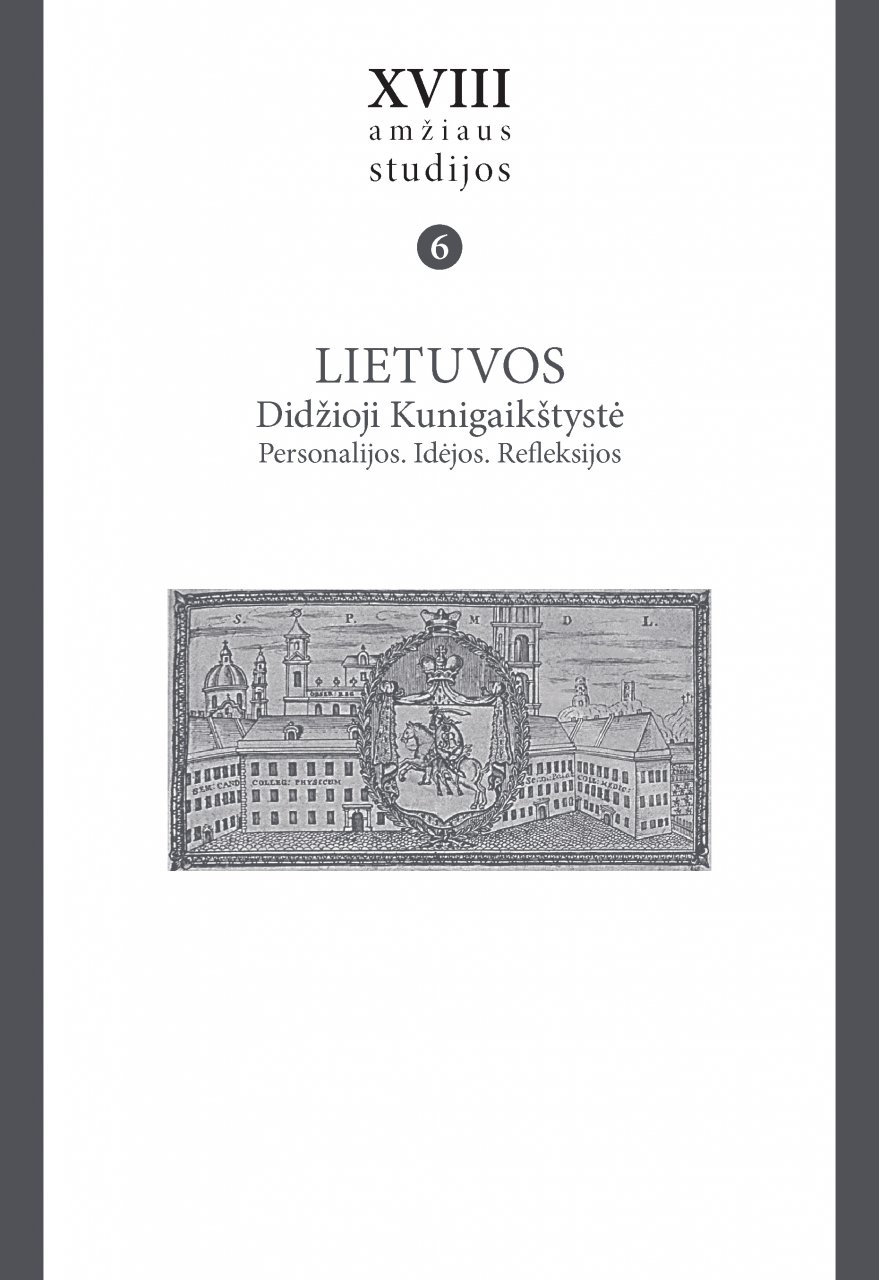Volume 6 (2020): Lietuvos Didžioji Kunigaikštystė Personalijos. Idėjos. Refleksijos, December 2020

Order by:
Pub. online: 31 Dec 2020
Type: Article
 Open Access
Open Access
Journal:
XVIII amžiaus studijos / The Eighteenth Century Studies
Volume 6 (2020): Lietuvos Didžioji Kunigaikštystė Personalijos. Idėjos. Refleksijos, pp. 190–204
Abstract
Pub. online: 31 Dec 2020
Type: Article
 Open Access
Open Access
Journal:
XVIII amžiaus studijos / The Eighteenth Century Studies
Volume 6 (2020): Lietuvos Didžioji Kunigaikštystė Personalijos. Idėjos. Refleksijos, pp. 205–227
Abstract
Pub. online: 31 Dec 2020
Type: Article
 Open Access
Open Access
Journal:
XVIII amžiaus studijos / The Eighteenth Century Studies
Volume 6 (2020): Lietuvos Didžioji Kunigaikštystė Personalijos. Idėjos. Refleksijos, pp. 230–249
Abstract
Pub. online: 31 Dec 2020
Type: Article
 Open Access
Open Access
Journal:
XVIII amžiaus studijos / The Eighteenth Century Studies
Volume 6 (2020): Lietuvos Didžioji Kunigaikštystė Personalijos. Idėjos. Refleksijos, pp. 250–268
Abstract
Pub. online: 31 Dec 2020
Type: Article
 Open Access
Open Access
Journal:
XVIII amžiaus studijos / The Eighteenth Century Studies
Volume 6 (2020): Lietuvos Didžioji Kunigaikštystė Personalijos. Idėjos. Refleksijos, pp. 269–293
Abstract
Pub. online: 31 Dec 2020
Type: Article
 Open Access
Open Access
Journal:
XVIII amžiaus studijos / The Eighteenth Century Studies
Volume 6 (2020): Lietuvos Didžioji Kunigaikštystė Personalijos. Idėjos. Refleksijos, pp. 294–322
Abstract
Pub. online: 31 Dec 2020
Type: Article
 Open Access
Open Access
Journal:
XVIII amžiaus studijos / The Eighteenth Century Studies
Volume 6 (2020): Lietuvos Didžioji Kunigaikštystė Personalijos. Idėjos. Refleksijos, pp. 323–334
Abstract
Pub. online: 31 Dec 2020
Type: Article
 Open Access
Open Access
Journal:
XVIII amžiaus studijos / The Eighteenth Century Studies
Volume 6 (2020): Lietuvos Didžioji Kunigaikštystė Personalijos. Idėjos. Refleksijos, pp. 335–357
Abstract
Pub. online: 31 Dec 2020
Type: Review
 Open Access
Open Access
Journal:
XVIII amžiaus studijos / The Eighteenth Century Studies
Volume 6 (2020): Lietuvos Didžioji Kunigaikštystė Personalijos. Idėjos. Refleksijos, pp. 360–363
Pub. online: 31 Dec 2020
Type: Review
 Open Access
Open Access
Journal:
XVIII amžiaus studijos / The Eighteenth Century Studies
Volume 6 (2020): Lietuvos Didžioji Kunigaikštystė Personalijos. Idėjos. Refleksijos, pp. 364–365